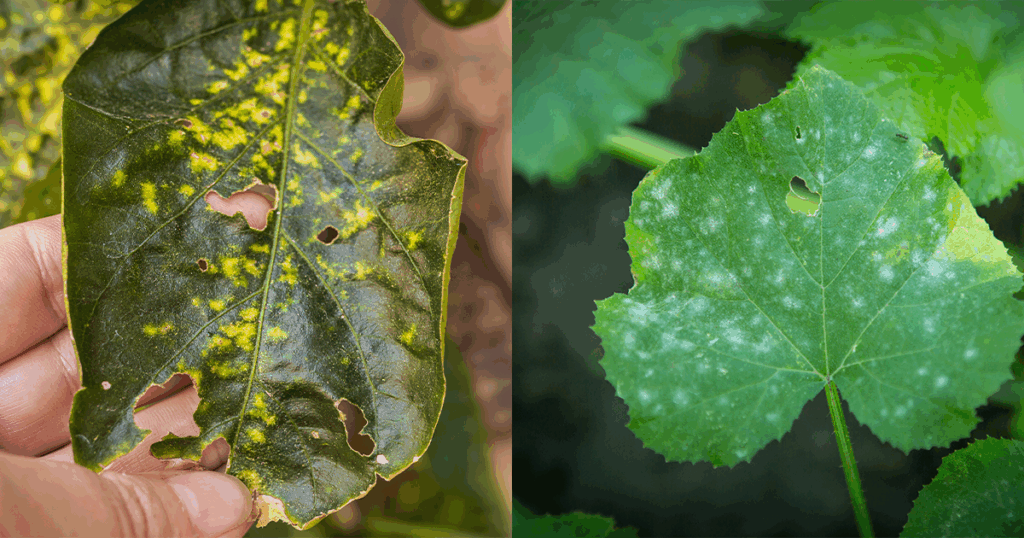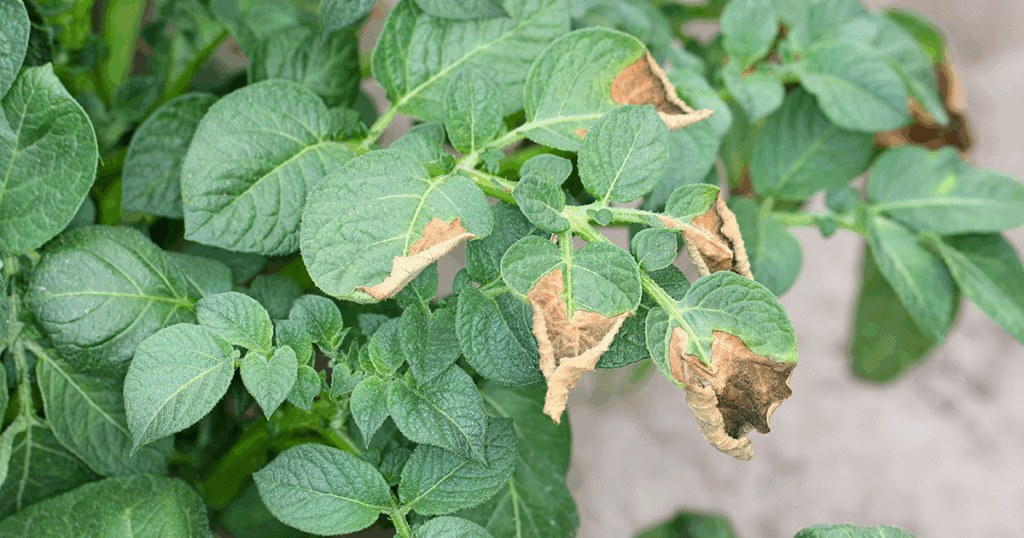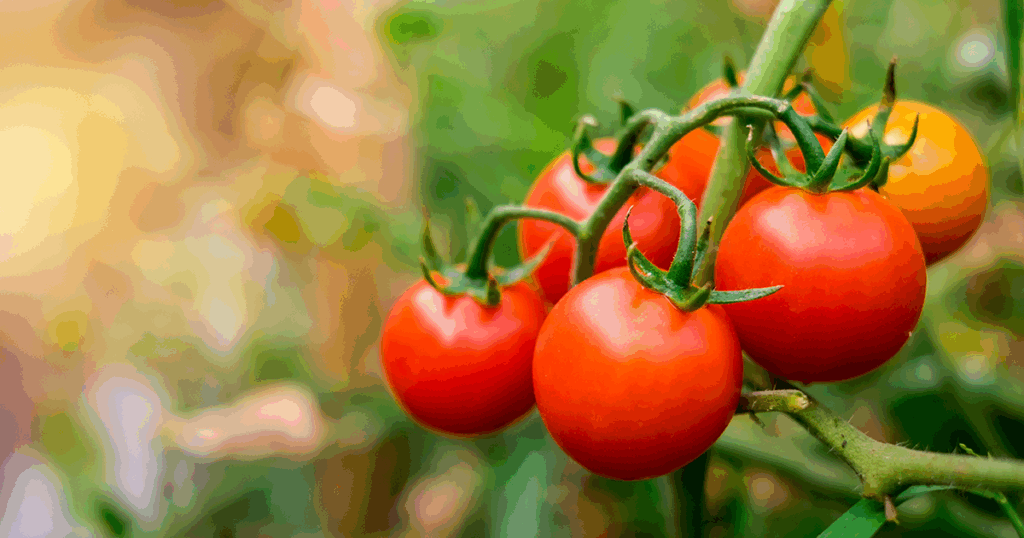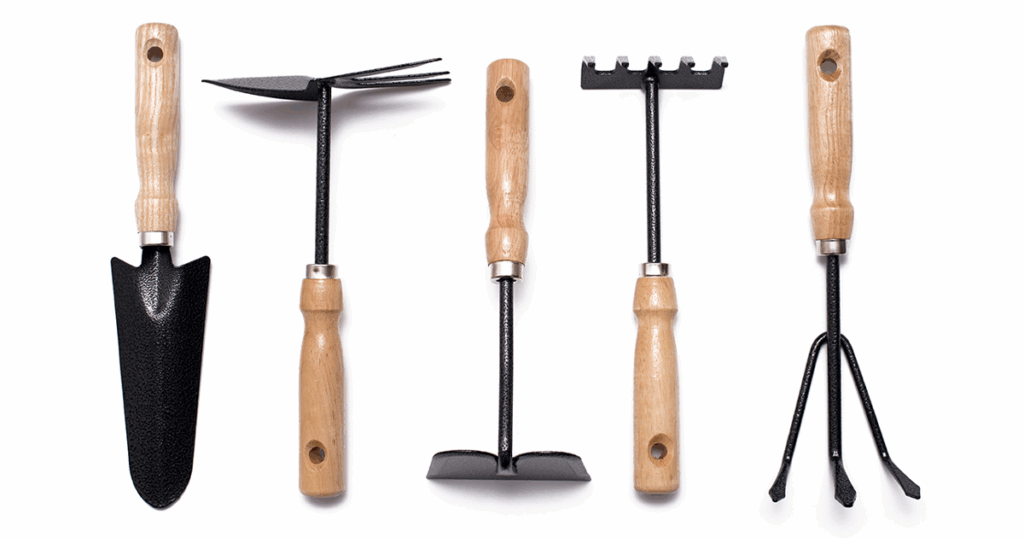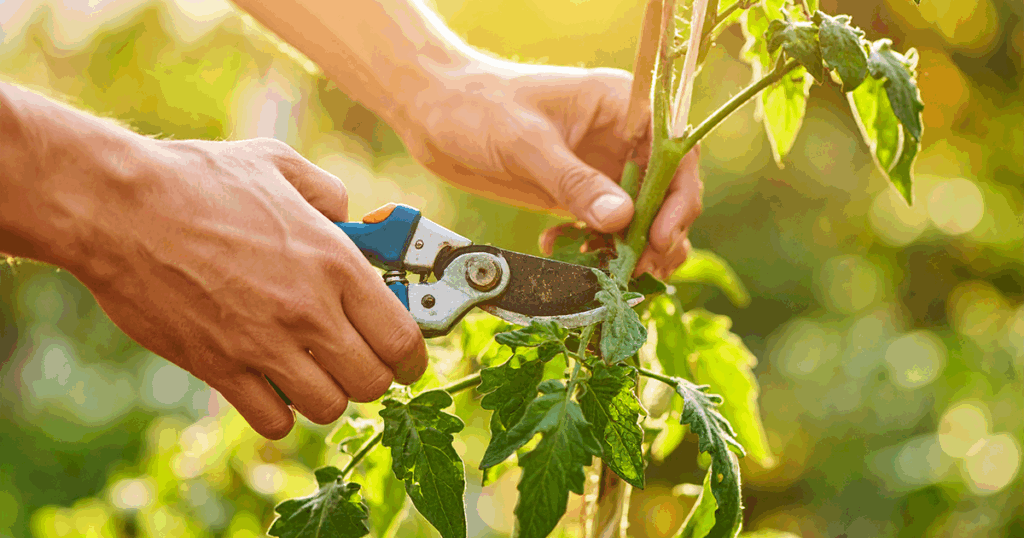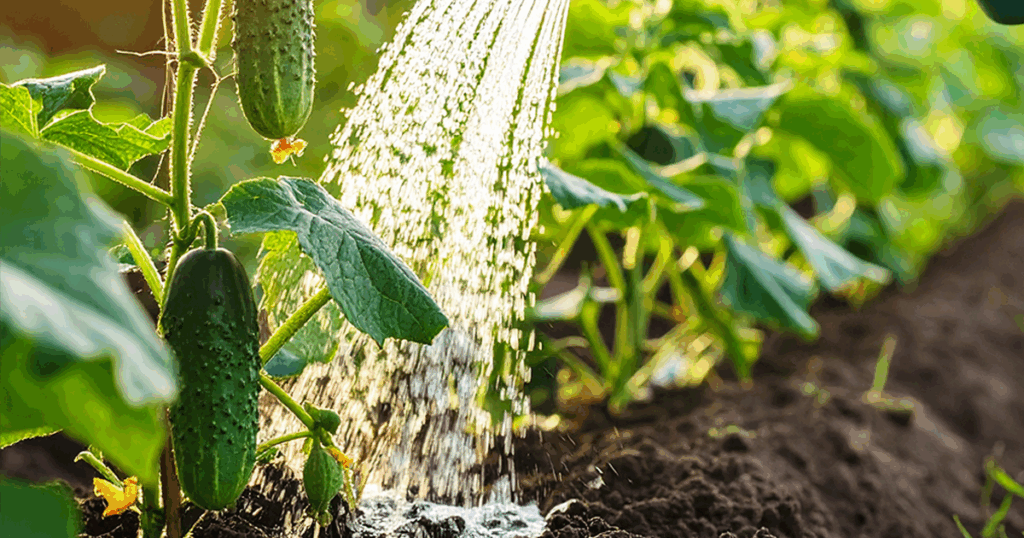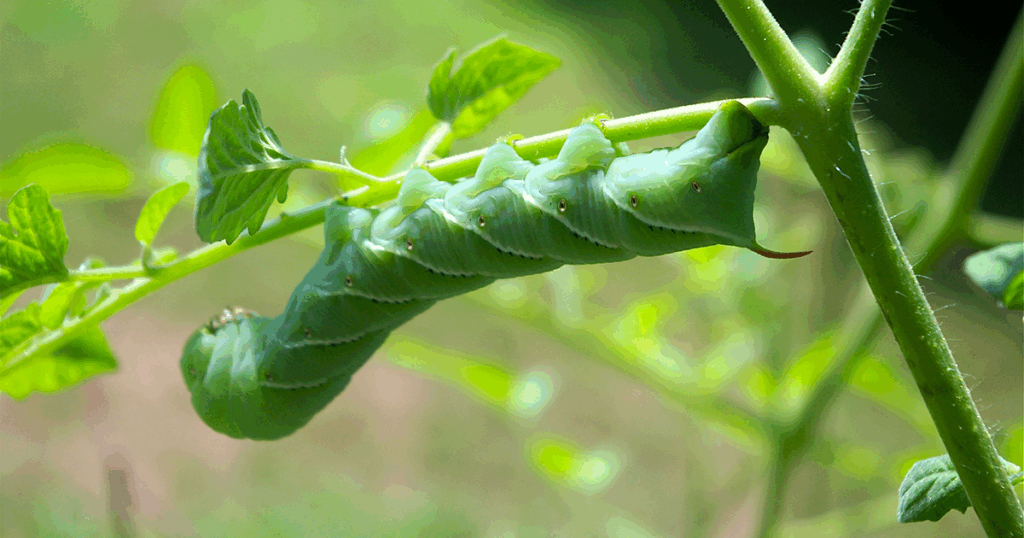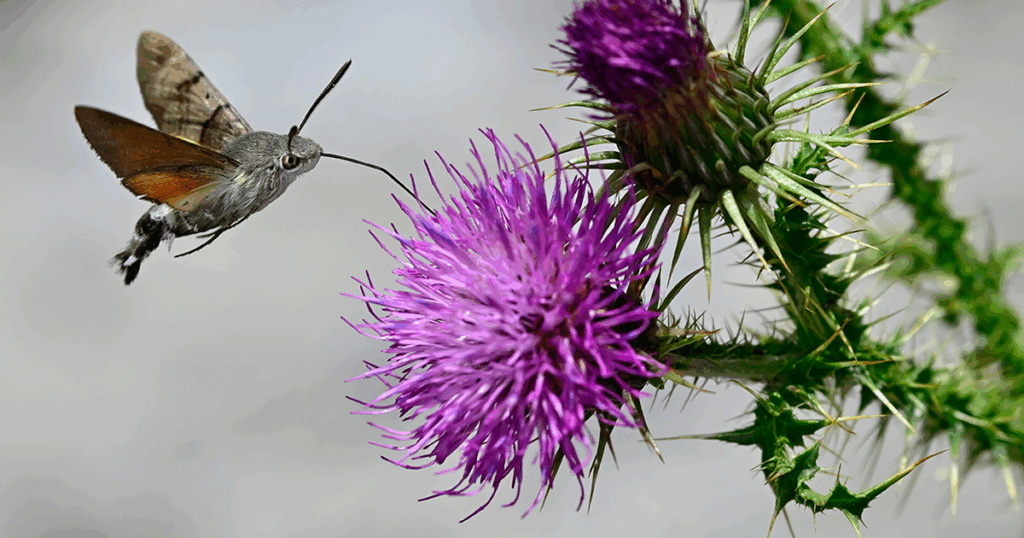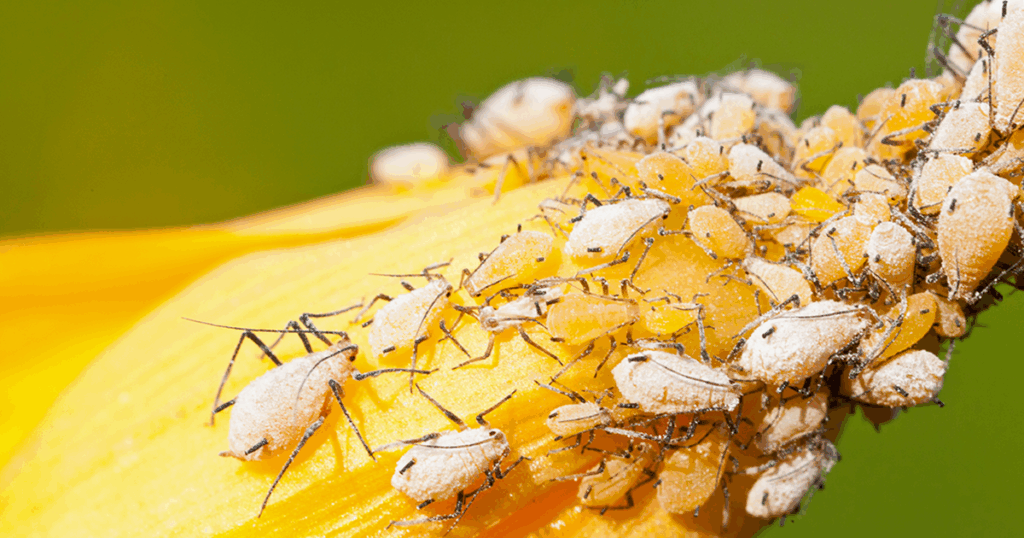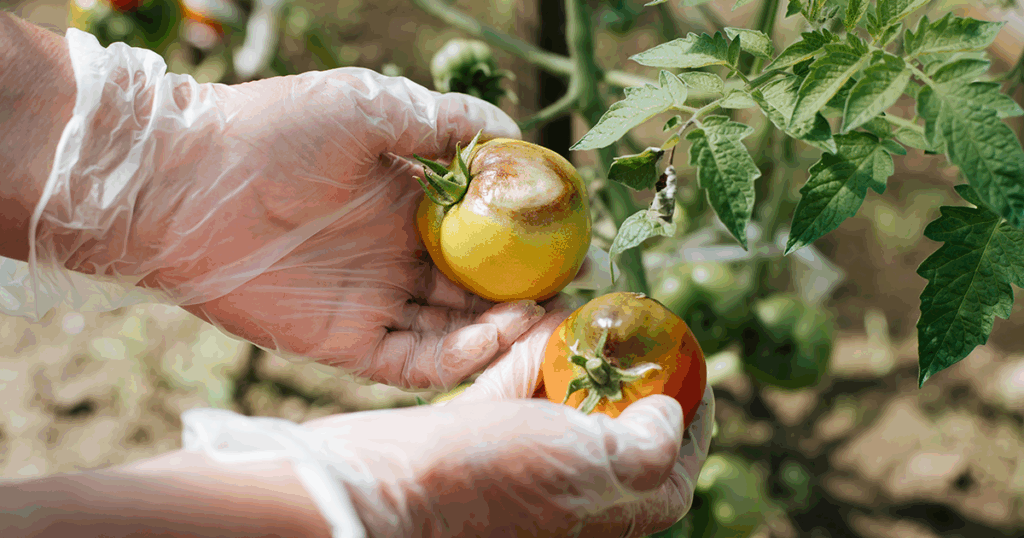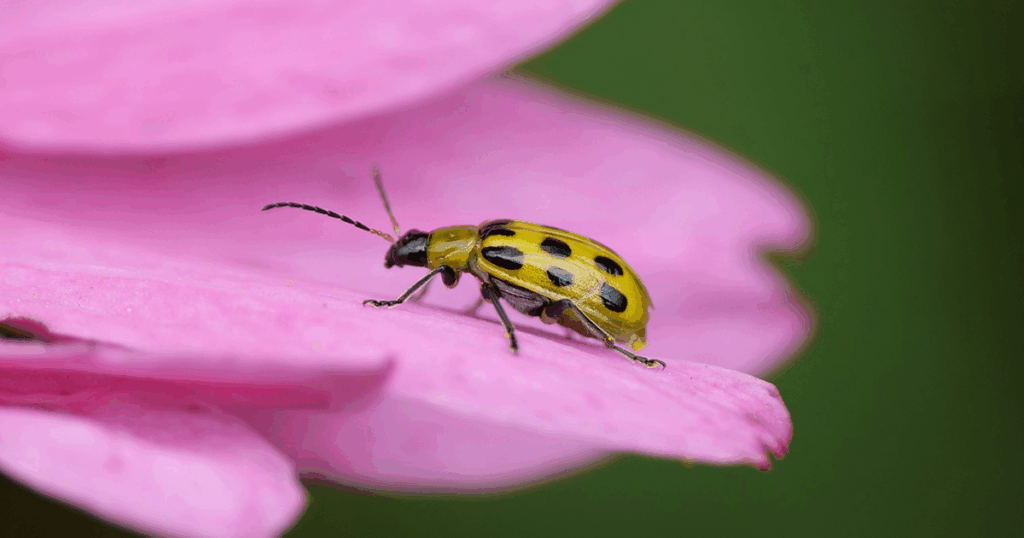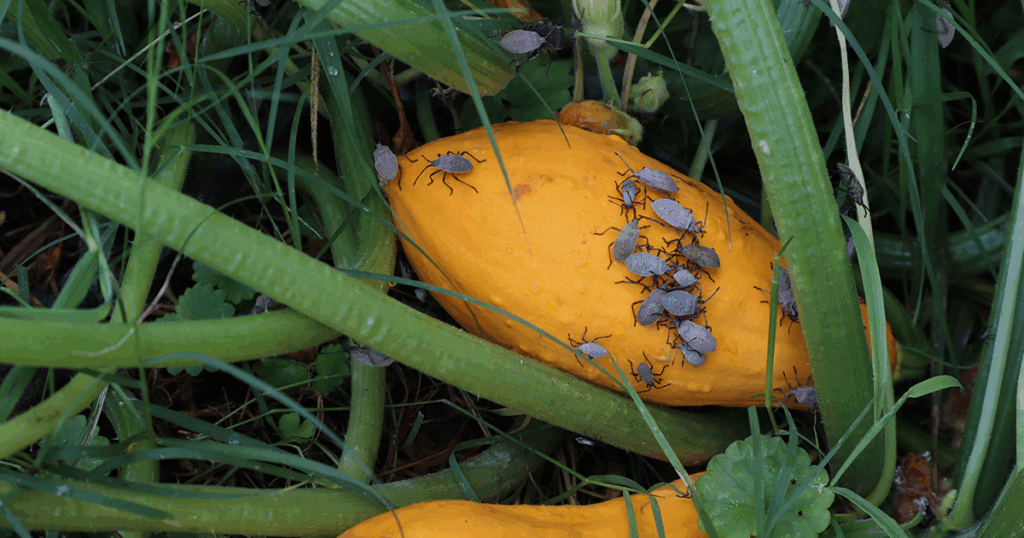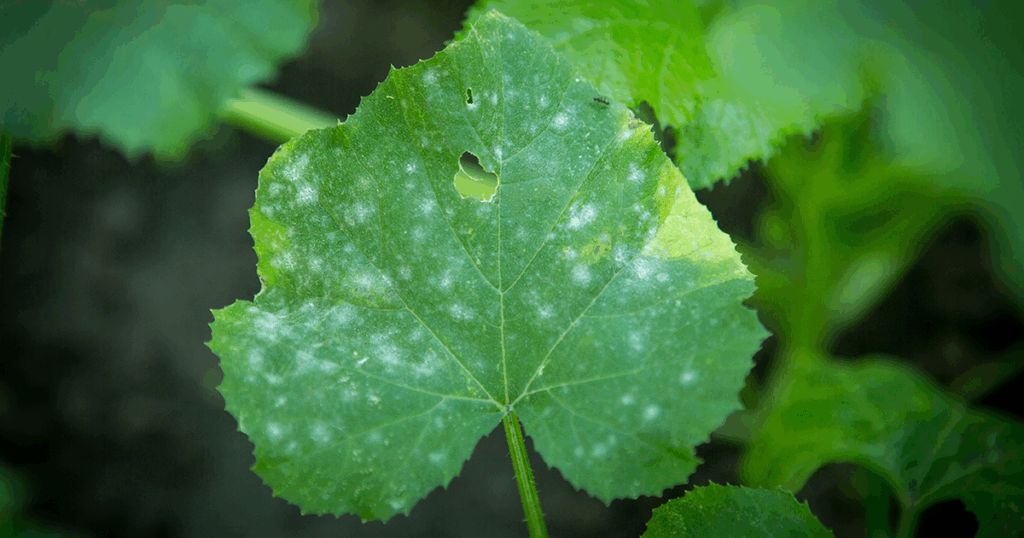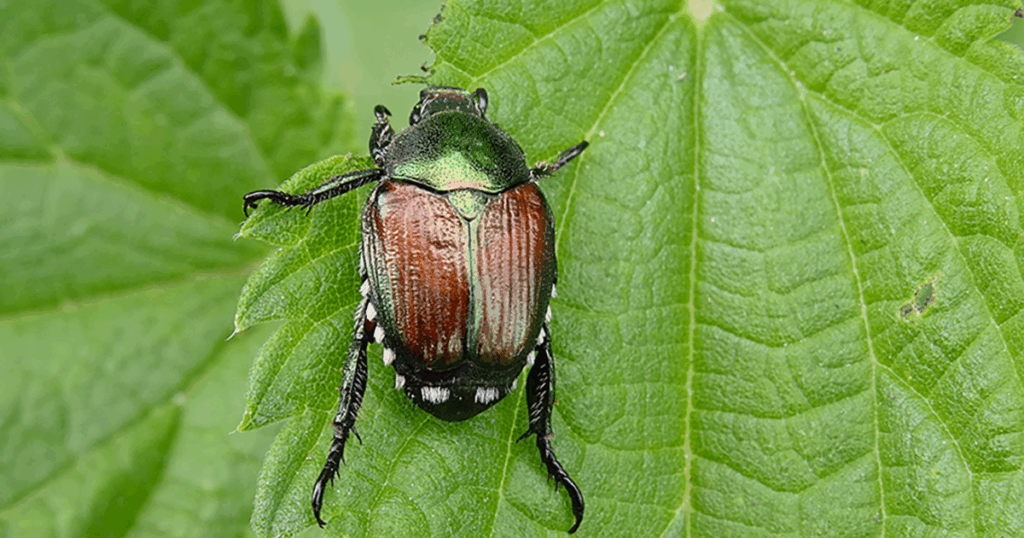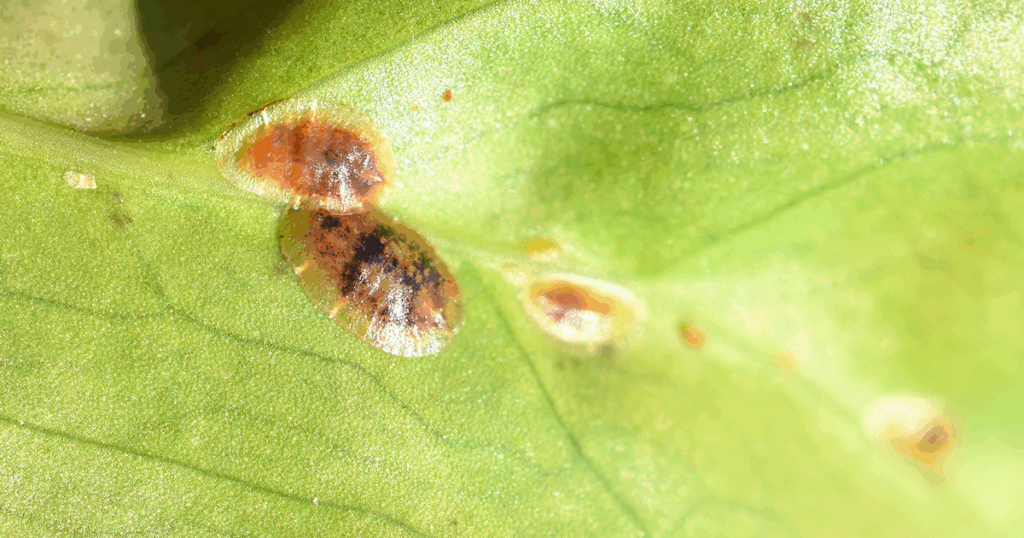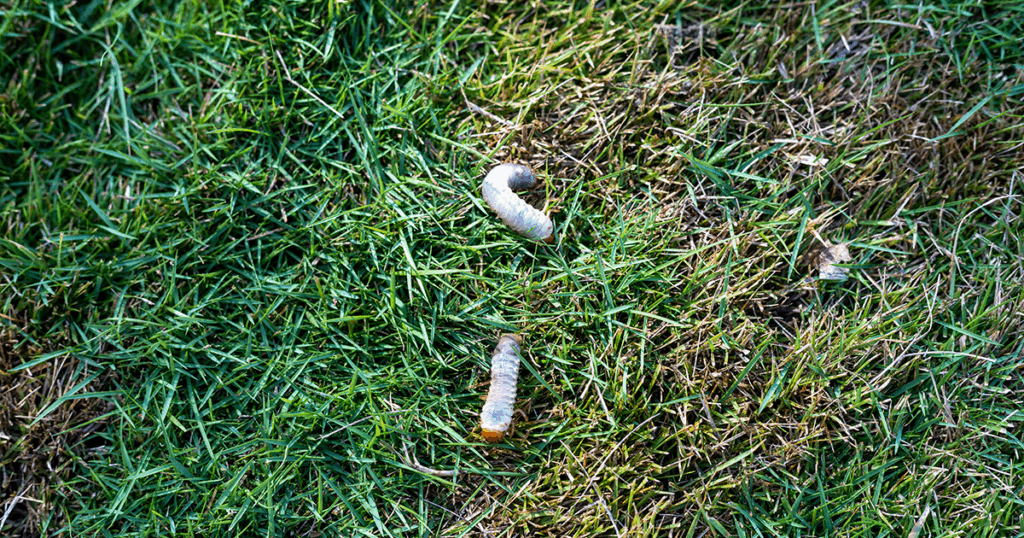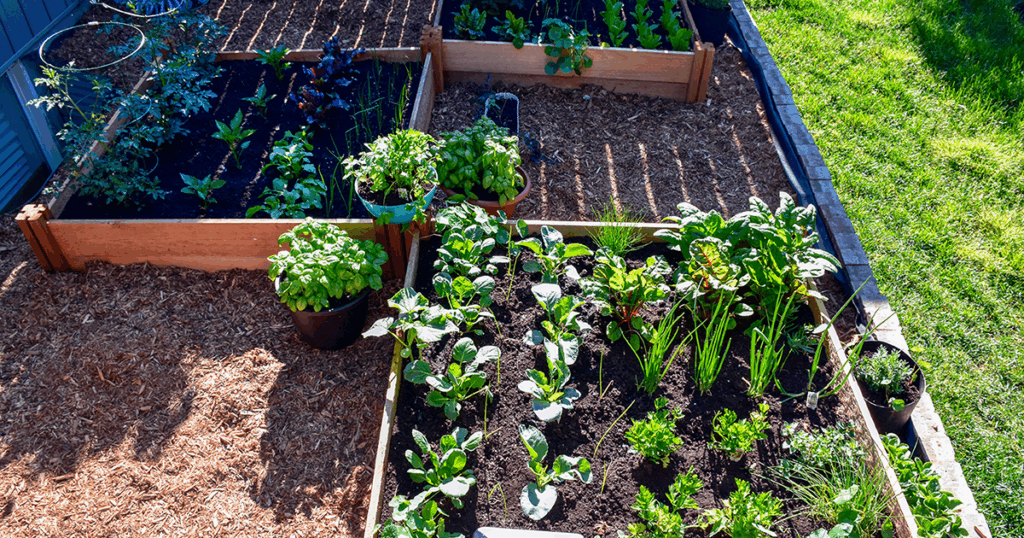7 Proven Ways To Prevent Garden Pests And Diseases (Before They Destroy Your Vegetables, Flowers & More)
Learn all about how to prevent garden pests and diseases in 2025! We’ve compiled the 7 best ways for pest and disease prevention.
Jump to a Topic:
- 1. Soil Health and Plant Nutrition to Prevent Garden Pests & Diseases
- 2. Garden Hygiene and Sanitation
- 3. Environmental Controls to Prevent Garden Pests and Diseases
- 4. Tomato Pests and Disease Prevention
- 5. Cucumber Pests and Disease Prevention
- 6. Flower Garden Pests and Disease Prevention
- 7. When Prevention Fails for Garden Pests and Diseases…
- Conclusion
You put a lot of time, effort, and money into growing the best garden you can. The last thing you want is to wake up in the morning to wilted plants infested with unidentified insects or diseases! If you’re currently dealing with a pest or disease problem, we laid out some brief pointers in this article to help you work through it. Unfortunately, some gardens end up being beyond repair once garden pests or diseases take hold. Prevention is significantly easier to implement than treatments are.
Many gardeners rush to use harmful chemical solutions to solve their pest or disease issues, and those methods often come with unintended consequences. The concept of prevention over treatment is one of the core principles of integrated pest management (IPM), which is a sustainable approach to managing pests that many environmentally conscious organizations and governments adhere to. The sooner you can identify the pest or disease that’s harming your garden, the sooner you can come up with an action plan. Better yet, use our tips to help prevent garden pests and diseases from ever taking hold in the first place. We’re going to lay out 7 proven ways you can prevent pests and diseases from causing irreparable damage to your garden!
1. Soil Health and Plant Nutrition to Prevent Garden Pests & Diseases
Your garden’s first line of defence from garden pests and diseases is your soil! It might seem obvious since you’re reading this on BigYellowBag.com, but we promise this point is crucial. Healthy soil means healthy plants, and healthy plants are much more resilient to pests and diseases than their weaker counterparts. Many garden diseases can also be “soil-borne”. This means that the actual disease isn’t thriving on your plants, but instead it’s propagated through the soil.
A common example of a soil-borne disease is blight. Blight gets spread through a fungus that attacks plants and can lead to leaf spots, stem lesions, and even plant death. This fungus can overwinter in your soil and affect next year’s crop. If you get blight, it’s strongly suggested to remove the existing soil and replace it. Be aware that blight-causing fungus spores can spread from the wind, water, insects, animals, and even garden tools! So you’ll want to ensure the blight-affected soil isn’t nearby before refreshing your garden. You should check with your neighbours to see if they’re experiencing the same problem so you can work together on a solution.
Need fresh Black Garden Soil to replenish your garden with? Order your BigYellowBag of Black Garden Soil today and get it delivered FREE to your door!
2. Garden Hygiene and Sanitation
Especially in recent years, we have come to understand the importance of hygiene in preventing the spread of viruses and diseases among humans. Logically, the same principle applies when we’re caring for our gardens. Hygiene in the garden looks a little different. You can leave your hand sanitizer inside! One of the most important garden hygiene practices is crop rotation. It’s easy to fall into a state of complacency with our gardens. Once we find the best place to grow our vegetables, it can seem convenient to just keep those same crops in the same place year after year. Unfortunately, planting the same crop in the same place year after year can have a detrimental effect.
Different crops rely on different nutrients in the soil to grow big and strong. When you grow the same plants in the same spot in consecutive years, you can run into nutrient deficiency issues. For example, tomatoes are heavy feeders, and they can deplete your soil of nitrogen and phosphorus. After growing tomatoes in a particular spot in your garden, consider planting legumes or root vegetables in that spot next year. Legumes and root vegetables can often replenish the nitrogen and phosphorus that the tomatoes consumed in the year prior. Be sure to do lots of research to ensure you have a proper crop rotation plan.
Keep Things Clean!
Another key aspect of garden hygiene is ensuring your tools and equipment are clean! After pruning a particular plant, it may seem inconvenient, but it’s important to get your pruning shears clean again before moving on to another plant. You can unknowingly spread diseases or pests by using unclean shears. Do your best to keep the rest of your equipment and implements clean throughout the season! Going back to our blight example, if you have blight one year, dig out the blight-ridden soil, but then use the same unclean shovel to move your new growing medium, you can be contaminating your new soil. Always ensuring your garden tools are thoroughly cleaned will greatly help prevent pests and diseases.
3. Environmental Controls to Prevent Garden Pests and Diseases
As gardeners, we’re in a constant battle with the weather. There’s only so much we can do to set our gardens up for success, and the rest is in Mother Nature’s hands. A key aspect of preventing pests and diseases is properly spacing your plants to allow effective air circulation. When there isn’t enough space for air to circulate around your plants, you can end up with moisture regulation issues and eventually rot! Poor air circulation can make your plants weaker, and thus make them more susceptible to pest and disease damage. You may have some pruning to do as well to improve air circulation in your garden!
Proper Watering Technique is Crucial
Knowing proper watering methods can make a big difference in your garden performance as well! You can reduce disease pressure in your garden by watering at the base of your plants and by watering in the morning. These watering practices ensure the foliage remains dry, but the soil will be hydrated so your plants can uptake water throughout the day. If you indiscriminately water your garden and wet down all the leaves, you can be leaving your garden vulnerable to diseases and rot. Do your best to get your garden watered during the golden hours of the day, between 6AM and 8AM.
Struggling to beat the heat in your 2025 garden? Learn many tips about maintaining your garden throughout a heat wave in this article!
Another powerful tool in every gardener’s pest and disease-fighting arsenal is mulch. Maintaining proper soil moisture levels, keeping weeds down, and deterring some soil-dwelling pests are just a few of the benefits of applying a healthy layer of mulch. Mulch can help keep certain pests like slugs and snails from reaching your plant roots and stems. Using mulch can also help you reduce the need for frequent watering, deterring pests that thrive in consistently moist conditions like earwigs, fungus gnats and soil mites.
4. Tomato Pests and Disease Prevention
Common Garden Pests That LOVE Tomatoes
Tomatoes are easily one of North America’s favourite backyard crops! Unfortunately, there are several common garden pests that also love to seek out tomato plants. Hornworms are one of the more “alien-like” pests you’ll find enjoying the foliage of your tomato plants. They’re large, thick-bodied caterpillars that can reach sizes up to 4 inches long. You can often find them resting on the stems of your tomato plants during the day, and they’re easily identifiable from their bright green colour with white diagonal stripes along the sides. True to their namesake, hornworms have distinct red horns protruding from the rear end.
Tomato Hornworms
Hornworms are the caterpillars of the sphinx moth (AKA hawk moths or hummingbird moths) and they feed on your tomato plant’s leaves during the night. The irregular holes left in leaves, completely stripped branches, and dark green or black droppings (frass) on leaves and the soil underneath your tomatoes are tell-tale signs of hornworms. Unfortunately, there’s not much you can in terms of preventative measures for hornworms, but early identification is key to treatment! If you notice sphinx moths flying around your garden in the evenings, you’ll want to take action to prevent them from infesting your garden with hornworms. A safe, organic treatment you can spray on your garden to fight hornworms is called bacillus thuringiensis. Abbreviated as Bt, it’s a naturally occurring soil bacterium that produces proteins that are toxic to caterpillars but safe for humans, pets, and beneficial insects.
As with anything you spray on your garden, you’ll want to do plenty of research into Bt before applying it. It’s most effective against young hornworms, so you’ll want to make sure you identify the issue and take action early!
Aphids Love Tomatoes
Aphids are one of the more frustrating garden pests to find in your tomato plants, since they can rapidly reproduce, sucking valuable plant sap and possibly transmitting viral diseases. Luckily, there are several companion planting strategies you can use to keep aphids away from your tomatoes. One of the best flavour combinations that goes great with tomatoes is basil. Not only will you love to have fresh basil for your next pasta dinner, you’ll also be delighted to hear that basil deters aphids by confusing their ability to locate your tomato plants!
Major Tomato Diseases
Garden pests aren’t the only things to worry about when it comes to your tomato plants. Several plant diseases can be especially harmful to your tomatoes. We briefly talked about blight earlier in this article, and it’s one of the most common diseases that can take over your tomato garden. Many of the prevention methods we’ve discussed so far are effective at preventing blight, like ensuring proper air circulation and avoiding over-watering. If you’re dealing with a blight issue, you’ll want to look into applying a fungicide to try and save this year’s harvest.
Fusarium wilt is another common tomato disease that you’ll want to be on the lookout for! It’s caused by a soil-borne fungus, similar to blight, but fusarium wilt attacks tomato plants through their root systems. It can survive dormant in soil for years, even without any host plants. Your best defence against fusarium wilt is to have the healthiest garden soil. Consistently replenishing your garden with BigYellowBag Black Garden Soil will surely help prevent fusarium wilt and other soil-borne diseases from taking hold. Using raised garden beds can also help prevent these kinds of diseases by improving drainage, reducing root stress and fungal development.
Septoria leaf spot is another common disease that can take over your tomatoes. Similar to the other diseases we’ve mentioned, the best form of defence from this disease is proper plant spacing and improved airflow. Prune your plants, especially near the soil, to ensure things aren’t getting too crowded. Another good prevention strategy is to seek out disease-resistant plant varieties! Do plenty of research when selecting your tomato plants, and identify varieties that will be more resilient to common diseases in your area.
5. Cucumber Pests and Disease Prevention
Common Garden Pests That LOVE Cucumbers
Cucumbers are another widely adored crop for most North American gardeners! They’re relatively easy to grow, have long-lasting harvest periods, and they’re a super versatile ingredient you can use in tons of different dishes. A common pest that you can find feasting on your precious cucumber plants is cucumber beetles. These nasty little critters can be difficult to deal with once they take hold. The adult beetles voraciously consume leaves, flowers and fruits. The larvae feed on roots and stems below ground. These beetles are also known to spread bacterial wilt which can kill entire plants!
Cucumber Beetles
The best methods of prevention for cucumber beetles are row covers and trap crops. Physical barriers for your cucumber plants can be a little inconvenient, but they’re the most effective defence against cucumber beetles. You can use lightweight floating row covers that use plastic, fabric, or mesh to protect your plants. You’ll want to install these protective row covers early in the season, before the beetles can take hold.
Trap crops can also be effective when trying to keep cucumber beetles away from your precious cucumbers. Trap crops work by attracting beetle populations away from your main cucumber crops. You can then manage or eliminate the beetles on those trap crops. Some common trap crops for cucumber beetles are blue hubbard squash, acorn squash, and zucchini! If you’re struggling with cucumber beetles in your area, consider installing a secondary trap garden with some of these trap crops for next year.
Squash Bugs
Another common cucumber-attacking pest is the squash bug. You can recognize if squash bugs are starting to attack your cucumber plants by looking out for characteristic yellow or brown spots that eventually turn black. The adults and nymphs have needle-like mouths that they use to pierce plants, and they have an enzyme they inject that kills plant cells. In terms of prevention, companion planting can help, but early detection and egg removal are the most effective ways of dealing with them.
Squash bugs are large, shield-shaped bugs with flattened bodies. They’re dark brown to black with distinctive orange or reddish-brown stripes along the edges of their body. They often emerge in late-April to early-June, and overwintered adults are sluggish and easier to spot during the cool morning hours. Do your best to eliminate the bugs when they’re slow-moving. Once you identify a squash bug problem, you’ll want to keep your eyes out for eggs. Check the undersides of leaves, stem junctions, leaf veins, and sheltered areas in your garden for the eggs. They’re bronze to copper-coloured, oval in shape, and they’ll be arranged in tidy clusters. Use a small knife to gently scrape the eggs into a bag or onto a sheet of paper. Crush the eggs or dispose of them in a sealed garbage can to prevent any survivors.
Cucumber Disease Prevention
Similar to the diseases that often plague your tomato plants, many cucumber diseases are best prevented by controlling moisture and air flow. Selectively pruning your cucumber plants can be necessary if the foliage becomes too crowded. While blight can be an issue in cucumber plants, they’re more likely to be afflicted by mildew. Powdery mildew specifically is caused by a couple of different parasitic fungi. Unlike many other fungal diseases, powdery mildew thrives in dry conditions. The spores of these fungi can travel along air currents over long distances. Early signs of a powdery mildew problem will be small white spots on upper leaf surfaces that can quickly cover entire leaves. Those leaves will then turn yellow, brown and eventually fall off completely. This disease can totally wipe out your cucumbers if left untreated.
Luckily, several cucumber varieties are naturally resistant to powdery mildew. Be sure to do plenty of research into these varieties when selecting plants in the Spring. Gardeners in drier climates should be especially selective, and they should do their best to find varieties with mildew resistance. If you’re dealing with a powdery mildew problem right now, you can use a simple baking soda solution to try and combat the disease. The alkalinity of the baking soda provides an uninhabitable environment for the mildew-causing fungi. Mix 1 tbsp of baking soda and 1/2 teaspoon of liquid soap per gallon of water. Initially, spray this solution on a small area of your infected plants to make sure it won’t cause unintended harm. Spray the solution on your cucumber plants in the early morning or evening to avoid leaf burn.
6. Flower Garden Pests and Disease Prevention
Garden Pests That Will Devour Your Flowers
It’s not only your vegetables that you have to defend from invaders. Even your annuals and perennials are on the menu for some pesky insects. As much as we might not find most of our decorative plants appetizing, there are plenty of garden pests that can turn your flower garden dreams into a nightmare.
Japanese Beetles Love to Eat Flowers
Japanese beetle populations have been rapidly spreading throughout North America. Many regions are now considered infested, and most gardeners will have to deal with them at some point in their gardening journey. Unfortunately, there aren’t many preventative measures you can take against Japanese beetles. You’ll have to become an amateur exterminator to try and rid your garden of them. Hand picking and disposal of them is tedious, but can be an effective method of deterrence. Pheromone traps are also available from most garden retailers. If you’re trying to deal with an infestation, you’ll want to go and pick up a handful of these effective sticky traps.
Scale Insects Can Destroy Your Flower Garden
For many garden pests, there are simple and effective ways to combat them. Scale insects are one of the more robust garden pests that can wreak havoc in your flower garden. These little creatures have a waxy or hard shell covering that makes them difficult to control with conventional insecticides or treatments. Again, there isn’t much that can be done in terms of prevention other than maintaining a healthy garden environment. If you’re dealing with a scale insect problem, you’ll want to look into the use of horticultural oils. These oils work by suffocating the scale insects. The oil covers their bodies and blocks their breathing pores. Oils also disrupt the protective waxy coating and inhibit their ability to feed. Unfortunately, the oils are most effective against the young scale insects.
If you have a serious scale insect problem, you may also have to look into systemic insecticide treatments. These treatments are absorbed by the plant and spread throughout the tissue through the vascular system. Then the scale insects sucking sap from your plants will ingest the insecticide and die. As with any chemical treatments, we highly recommend doing plenty of research before any application. You’ll want to be well-versed in both the possible unintended and intended consequences of applying chemicals to your garden.
7. When Prevention Fails for Garden Pests and Diseases…
Monitor Your Garden Closely and Identify Issues Early!
Hopefully, you can put many of the prevention tips we’ve discussed into action in your garden. The most important aspect of pest and disease management is continuous monitoring and identifying any possible problems early. We recommend coming up with a monitoring schedule of sorts. Try and block out some time each week for a thorough inspection of your garden. The sooner you can identify an issue, the easier the remedy will be.
There are many free resources online that you can use for record keeping and diagnosing your plant concerns. One of the most popular apps for garden tracking and diagnostic recommendations is called Planta! Search for it in the Google Play Store or App Store. The free version can teach you plenty about the plants you’re growing, and it will even setup an intelligent watering schedule tailored to your plant varieties and their conditions.
Keep a detailed garden journal. This simple tip can help you identify any issues as early as possible. Record when you plant, water, prune and fertilize your garden. Take notes about the plants condition as well as the weather conditions. You’ll be able to identify patterns, and recognize when your plants aren’t performing to their full potential.
Treatment Thresholds Are Key
If you’re dealing with a pest or disease issue, you need to understand when to act versus when to wait. Here at BigYellowBag, we come from a long lineage of sod farmers. A common example of a treatment threshold in the sod world is when we’re dealing with grubs. Grubs are the larval stage of many different beetles, but in North America, we frequently deal with Japanese beetle grubs and June bug grubs.
We’ll find these grubs mainly in the late summer and early fall. The grubs will consume the grass roots aggressively during this time in anticipation of the cold winter coming. Healthy sod can withstand some grub activity. Once the grub population reaches a concentration of about 5-10 grubs per square foot, you can start to see damage. If you find just a few grubs in your lawn, your healthy, irrigated lawn is likely robust enough to withstand their impact. However, once you find more than 5-10 grubs per square foot, you may have to take action. That’s the treatment threshold for grubs in your lawn.
This concept of a treatment threshold carries over to your garden concerns as well! Most healthy plants can withstand a certain amount of external pressure from pests and diseases without intervention. But this is why we recommend you closely monitor your garden throughout the year! Identifying issues early, understanding the treatment threshold, and taking action when necessary are all essential to maintaining a healthy garden.
Stick it to Those Garden Pests and Diseases!
To recap, always have prevention at the top of mind before treatment. It’s significantly easier to prevent pests and diseases from taking hold in your garden rather than treating the problem. Ensure your garden soil is healthy since it’s the foundation of your entire garden. Stay on top of regular maintenance, pruning plants that get too crowded and adopting a deep, but less frequent watering schedule.
Gardening truly isn’t just a phase… It’s a lifestyle! Make a habit of monitoring your garden closely and taking detailed records. “Future you” will be thankful that you went out of your way to identify issues early, and that you have detailed notes to draw conclusions from. It may seem tedious, but accurate records will help immensely when you’re trying to figure out remedies and action plans against garden pests or diseases.
Are you dealing with a garden issue currently? Let us know about it in the comments! We’re here to help make your gardening journey a success. Finally, if you’re in need of a garden soil refresh, be sure to head to BigYellowBag.com and place your order today! Many BigYellowBag suppliers also provide mulch, so be sure to order your BigYellowBag today and start implementing some of these garden pest and disease-fighting tips!

